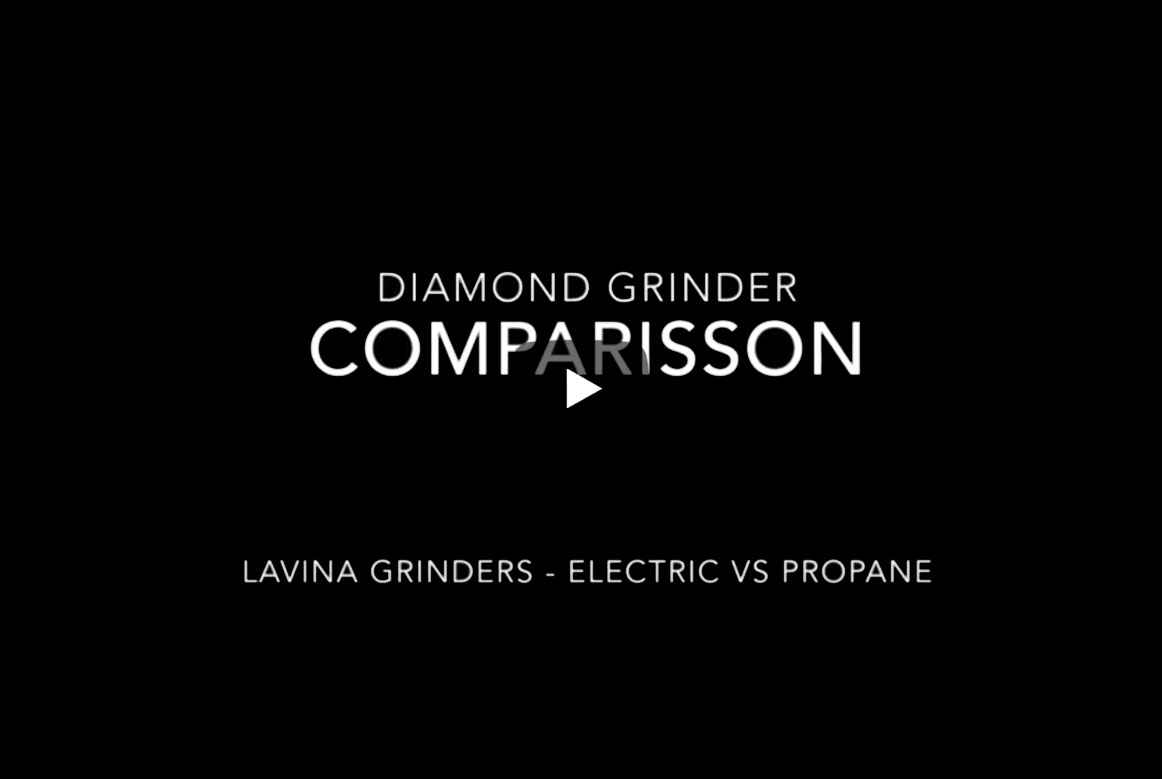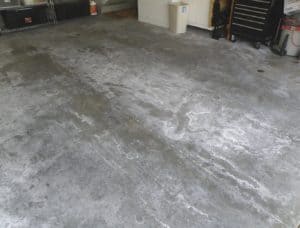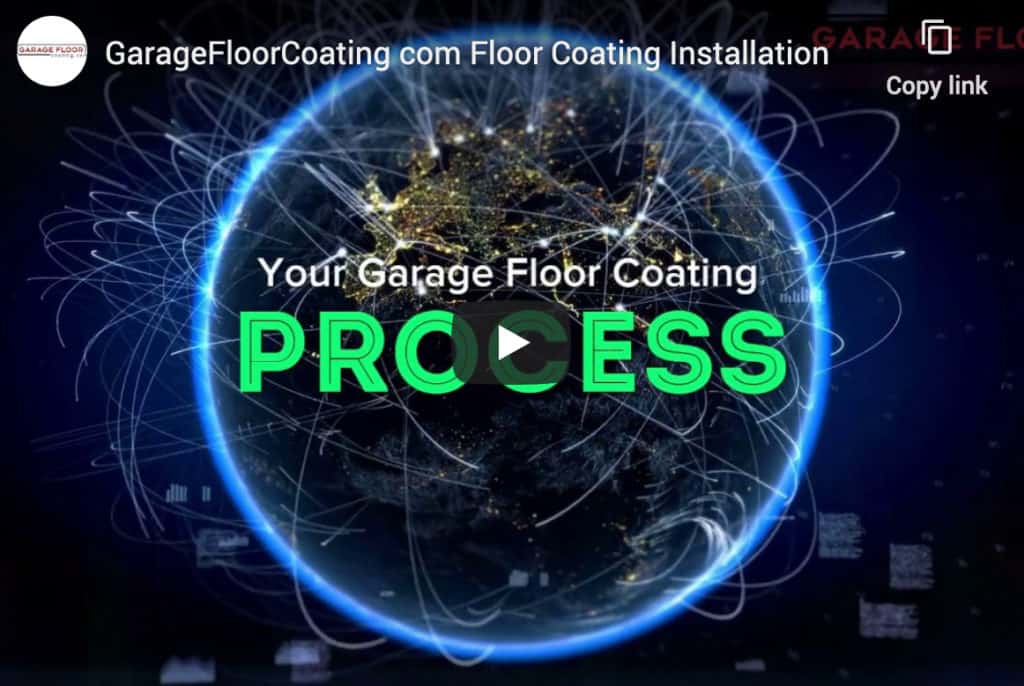It comes under so many names. Epoxy flooring, garage epoxy, garage floor paint and industrial flooring. But what is it? And how can you ensure you’re getting high quality epoxy flooring? There are so many garage floor coating companies offering “the best epoxy flooring” and “1-day polyurea-polyaspartic” coating systems. But we’ve been in the business installing floor coatings throughout the United States for over 23 years. Because of this, we can quickly spot the difference between a real floor coating professional and a real amateur. We want you to be able to do the same.
Here are 8 ways to ensure you get a professional, high quality flooring system.
Step 1: Know the Different Coating Product Types
If you’ve done some research, you may have heard about the three main types of floor coating products: (a) epoxy, (b) polyurethane and (c) polyurea-polyaspartic coatings. All three products are 2-component floor coatings. That is, a “Part A” component is mixed with a “Part B” component in specific ratios. But each of these floor coating types differs in chemistry and properties to deliver unique desired results.
What’s an Epoxy?
An epoxy is a problem-solving coating. It takes an “unfriendly” substrate like concrete and makes it receptive to subsequent coats. Why is this important? Because properly installed coating systems consist of multiple coats…and the coats are only as strong as the adhesion provided by the first “primer” coat.
There are several sub-categories of epoxy products. I’ll discuss two here:
Moisture-mitigating epoxies are applied direct to concrete and are excellent “primer” coats. They provide deep substrate penetration and are designed to mitigate high-moisture problems. How do you know your garage floor has high moisture? The easiest way is to use a Tramex CME Concrete Moisture meter, a meter that’s recognized by the Society for Protective Coatings (SSPC). Using something other than a moisture-mitigating epoxy on high moisture concrete could be costly mistake.
100% solids epoxies can be used as “primer” coats if moisture in the concrete is relatively low. As a result, they’re more often used as color coats and high-build repair coats. 100% solids epoxies cure by way of a chemical reaction and not by evaporation of solvents. So if 10 “mils” of this product are applied to concrete (a “mil” is a unit of thickness), the coating will be 10 mils thick! Because of its high-solids content, it can be applied heavily, burying imperfections in the concrete. This thickness makes for a very durable coating.
What’s a Polyurethane?
Polyurethanes are a blend of urethane resins. They’re not designed to fill defects in concrete or for direct-to-concrete application and are applied in thin coats. However, when they are applied over an epoxy primer coat, they provide highly durable, user-friendly, UV and stain-resistant flooring. A major drawback is that polyurethanes are not recommended for garages as topcoats because they are susceptible to staining by the plasticizers in tires. As such, these products are typically used on exterior patios and in spaces where vehicles are not parked for extended periods.
What’s a polyurea?
When the two components of a polyurea are mixed, they catalyze and cure to produce a mixture that becomes very hard, very quickly. The mixture has low to no volatile organic compounds (VOC’s) and is more flexible than epoxy. Because of its extremely fast cure rate (less than 5 seconds) and incredible hardness (less than 5 minutes), most polyureas require specialized equipment for application.
What’s a polyaspartic?
A polyaspartic is a polyurea with a slowed-down cure rate. The slower cure allows trained applicators to apply polyaspartics without special equipment. In a nutshell, all polyaspartics are polyureas. They provide extreme chemical, UV and scratch resistance, quick cure rates, and prevent tire plasticizer migration. This makes polyaspartics the best top coat for garages.
These products can also be applied in temperatures as low as -30°F and as high as 140°F. Under rare conditions (where concrete moisture levels are extremely low and temperature and humidity conditions are right), polyaspartics can be applied in one day with a “return-to-use” the following day!
Step 2: Know When to Use What Products?
The reality is that epoxy, polyurethane and polyurea-polyaspartic coatings each possess important advantages and disadvantages. These products are typically used in combinations to produce the most durable flooring for your unique space.
But the type and combination of coating products used must be determined by a professional installer only after assessing your space to be coated. Does your concrete exhibit high moisture? Is it exposed to the sun’s UV? Is there a potential for chemical staining? Is it a low-odor indoor or outdoor application? Do you need a fast “return-to-service”?
Understanding the pros and cons of an epoxy, polyurethane, polyurea-polyaspartic, and how to properly use these products in combination, will provide the most durable coating system for your unique space. “Contractors” mass-marketing 1-day installations and DIY epoxy flooring kits from your local hardware store don’t take these matters into consideration. When we’re asked if we do 1-day polyurea-polyaspartic systems, our answer is: “We can, but we’d rather do it right.”
Step 3: Understand Coating Systems
Coating systems consist of two or more coats of an epoxy, polyurethane and/or polyurea-polyaspartic with or without added “flakes” or metallic pigments. Professional installers will offer multiple coating systems in a multitude of colors. Coating systems typically fall into one of 4 categories: (a) solid epoxy flooring, (b) flake epoxy flooring, (c) mica flake epoxy flooring or (d) metallic epoxy flooring.
Solid Color Coating Systems
Solid color (or “seamless”) coating systems are the classic coating systems that were very popular in the past. They provide no superfluous patterns or texture…just a medium to high gloss finish in one of a variety of possible colors.
Because even the slightest concrete imperfection may show itself in this system, seamless coating systems are frequently installed in basements where the concrete is smooth. The beauty of this system is its simplicity and lower cost. See our solid-color (“seamless”) coating system here: Classic.
Flake Epoxy Flooring Coating Systems – Standard Colored Paint Flakes
In “standard-colored paint flake” coating systems, paint flakes are broadcast into the color coat in a medium, extra-heavy or full-flake spread. The flakes provide added color, contrast and texture not seen in the solid-color system. The addition of the colored flakes has the advantage of disguising minor concrete defects.
See our colored-paint flake epoxy flooring coating systems here: Deluxe, Premium and Ultra
Mica Flake Epoxy Flooring – Mica Media Natural Stone
Because of the added mica media stone flakes and subsequent clear coats, these systems are as durable as they are aesthetically stunning. They can be installed virtually anywhere, indoors and out. This quality flooring system has rapidly gained in popularity throughout the US. However, expect the installation costs to increase as you go from a standard-colored paint flake coating system to a mica-media natural stone coating system.
See our mica-media systems here: Diamond Effects, Stone Silicate, Bagari SE & Vintage Mica
 Metallic Epoxy Flooring Coating Systems
Metallic Epoxy Flooring Coating Systems
Metallic coating systems provide a flowing, 3-D marbled look with iridescent accents and are suited for areas where a real visual impact is desired. To obtain the marbled look, applicators use one of several methods to disperse the metallic pigments. The possible effects are only limited by the installer’s imagination. No two floors ever look alike. These high quality flooring systems are not recommended for garage or high-traffic areas. And due to the complexity of application, this flooring can be expensive. Kitchens, basements and family rooms are common areas for the installation of these systems.
See our metallic coating systems here: Liquid Minerals and Liquid Art.
Step 4: Be Wary of 1-Day Systems
There’s an old saying that goes “If you don’t have the time to do it right, then when will you have the time to do it over?” This certainly applies to mass-marketed “1-day polyurea-polyaspartic” flooring systems. So many coating companies are telling their customers that these 1-day polyurea-polyaspartic systems are a magic bullet.
The reality? These systems aren’t quality flooring because they simply don’t meet commercial specifications. Application of a polyurea-polyaspartic direct to concrete is not recommended. And these simple 2-coat systems use far less material; about half the mils (thickness) of a commercial-grade installation. The result is that 1-day polyurea-polyaspartic flooring systems are less durable and susceptible to delamination (peeling).
So why would a contractor hype a “1-day” flooring system? Because less material and less labor equals more profit. If your prospective installer suggests a 1-day polyurea-polyaspartic system without first measuring the moisture in your concrete floor, let the buyer beware!
Check out these articles for further information on polyaspartics:
https://www.concretenetwork.com/polyaspartic-floor-coatings/
https://www.concretenetwork.com/polyaspartic-floor-coatings/comparison.html
Step 5: Concrete Prep: Quality Flooring Needs a Profile
If you’re a professional contractor that specializes in the installation of epoxy, polyurethane or polyurea-polyaspartic floor coatings, then you know the importance of concrete preparation. For a primer coat to properly “bond”, the concrete needs to be clean and rough. That is, it must have a concrete surface profile or CSP. Smooth concrete isn’t a receptive substrate.
According to the International Concrete Repair Institute, the roughness of concrete surfaces can be ranked. A very smooth surface has a CSP of 1, while the roughest surfaces, a CSP of 10.
Take a peek at the following link for photographs of varying concrete surface profiles:
http://www.tccmaterials.com/userfiles/file/ConcreteSurfaceProfiles.pdf
Diamond Grinding
A CSP of 2 and lower isn’t good enough for long-term bonding of a newly applied coating. Peeling is likely, especially in high-traffic areas like garage floors. Conversely, CSPs greater than 4 aren’t needed for the purpose of epoxy, polyurethane and polyurea-polyaspartic application in most residential installations (garages, patios and basements for example).
A diamond grinder can produce CSPs of 3 to 4, which when prepping concrete for garage floor applications is in the Goldilocks range.
When grinding, the grinder must be equipped with vacuum attachments to minimize the creation of dust. Click the video to the right to see an electric grinder (left) and propane grinder (right) go head-to-head. Spoiler alert…the propane grinder wins hands-down.
Step 6: Ensure Testing for Concrete Moisture
As a nationwide floor coating company with over 23 years experience, we’ve seen many contractors and DIYers apply coatings without ever testing for moisture content before application. This is surprising because assessing concrete moisture is a very important pre-installation step.
In residential floor applications, high moisture present in concrete is one of the most common problems associated with peeling of floor coatings. Contractors must visually assess your space for efflorescence (white salts) and dark spots. But in addition, they must take multiple moisture readings of your concrete slab using a calibrated Tramex moisture meter.
If the readings are high (>4), we select our moisture-mitigating epoxy as the primer coat. As described above, these products provide deep substrate penetration and mitigate substrate moisture.
Step 7: DIY Versus Professionally-Installed Quality Flooring
In a vastly overcrowded floor coatings market, inexperienced contractors and DIYers abound. The former hypes “1-day polyurea-polyaspartic” coating systems and the latter uses hardware store DIY epoxy flooring kits. Whether it’s due to lack of experience, lack of technical knowledge, or a simple lack of ethics, the end result is a poorly installed floor.
A large percentage of our contracts are removals and re-coats of previously coated concrete flooring. Fading, ambering and peeling shortly after installation are common complaints.
There are many reasons why removals and re-coats are common with DIY epoxy flooring and inexperienced contractor installations. The installer may be using hardware store epoxy in lieu of commercial grade coating products. But more often, it’s simply the wrong product for the job. If a 100% solids epoxy or polyurea-polyaspartic is used as the primer coat instead of a moisture-mitigating epoxy on a high moisture substrate, peeling or blistering will occur.
In other cases, the installer has simply not mastered the techniques required to properly install a quality coating. Concrete preparation, crack repair, product selection, re-coat windows, and application technique can take years to master. Add to that, the need for commercial-grade equipment like grinders, floor machines and HEPA-filtered vacuums.
This video shows the professional installation of a flake epoxy flooring coating system. Click here.
Step 8: Ask the Right Questions
But how do you know if you’re hiring an experienced installer? Ask the right questions.
We’ve provided a link below that lists all the questions (and answers) that you’ll need to ask any bidding contractor. A worthy one will provide the right answers.
Click on the link to help you pick a professional: 10 Important Questions
Quality Flooring: The Wrap
For quality flooring, get professional help. Real knowledge and experience in concrete preparation, crack repair, product selection and application technique are too important to forgo. Using inexperienced “contractors” selling one-day installations or DIY epoxy kits to save money are costly mistakes. More often than not, the result is poor quality flooring and a costly redo.
Talk to an authorized GarageFloorCoating.com flooring specialist about your needs. You can find an authorized dealer or franchisee near you by going to www.garagefloorcoating.com. We’ll be happy to show you our many stunning coating systems and colors…and you can be confident you’re hiring a floor coating installation professional.


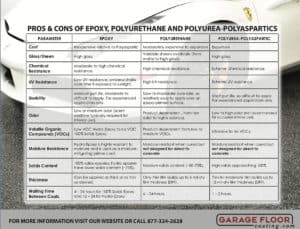
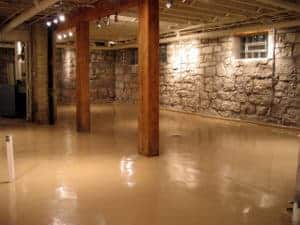
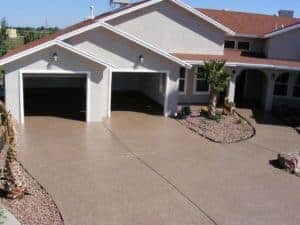

 Metallic Epoxy Flooring Coating Systems
Metallic Epoxy Flooring Coating Systems 